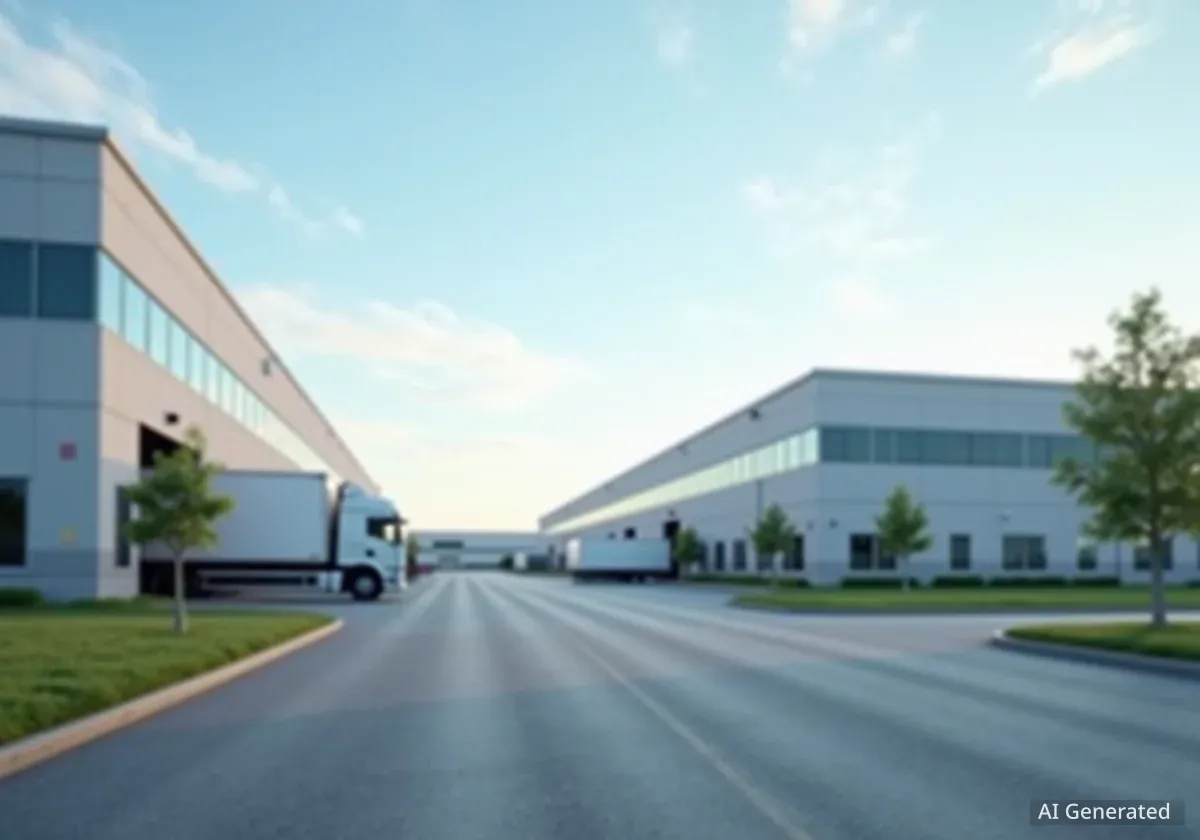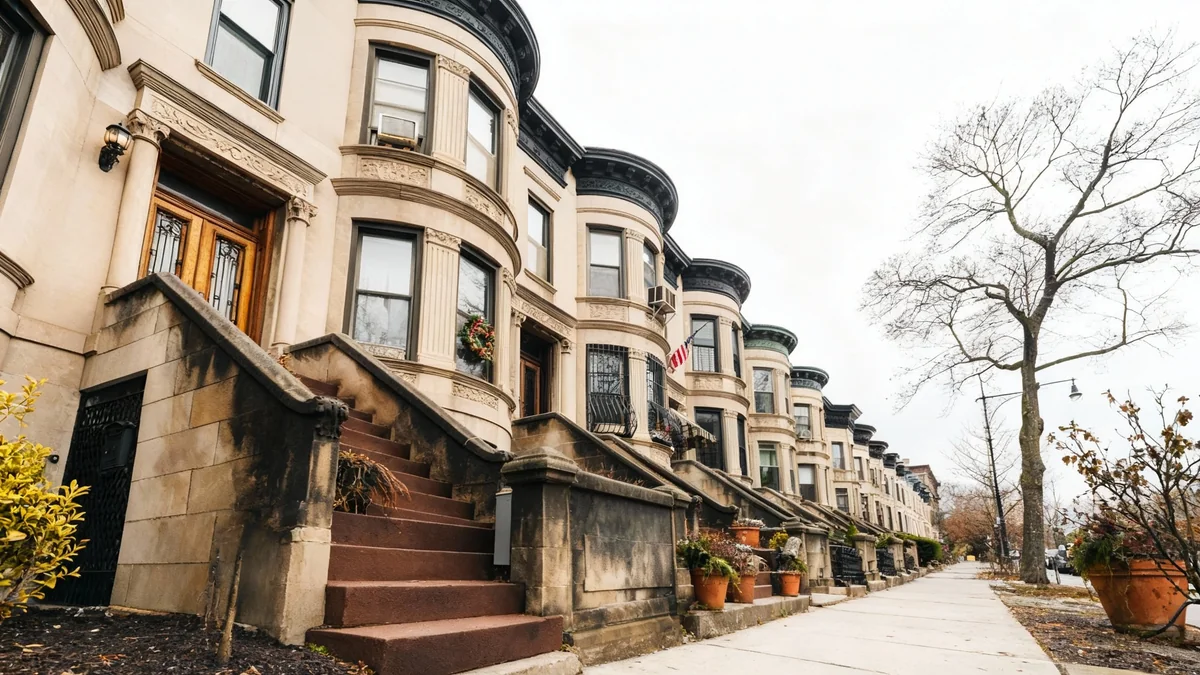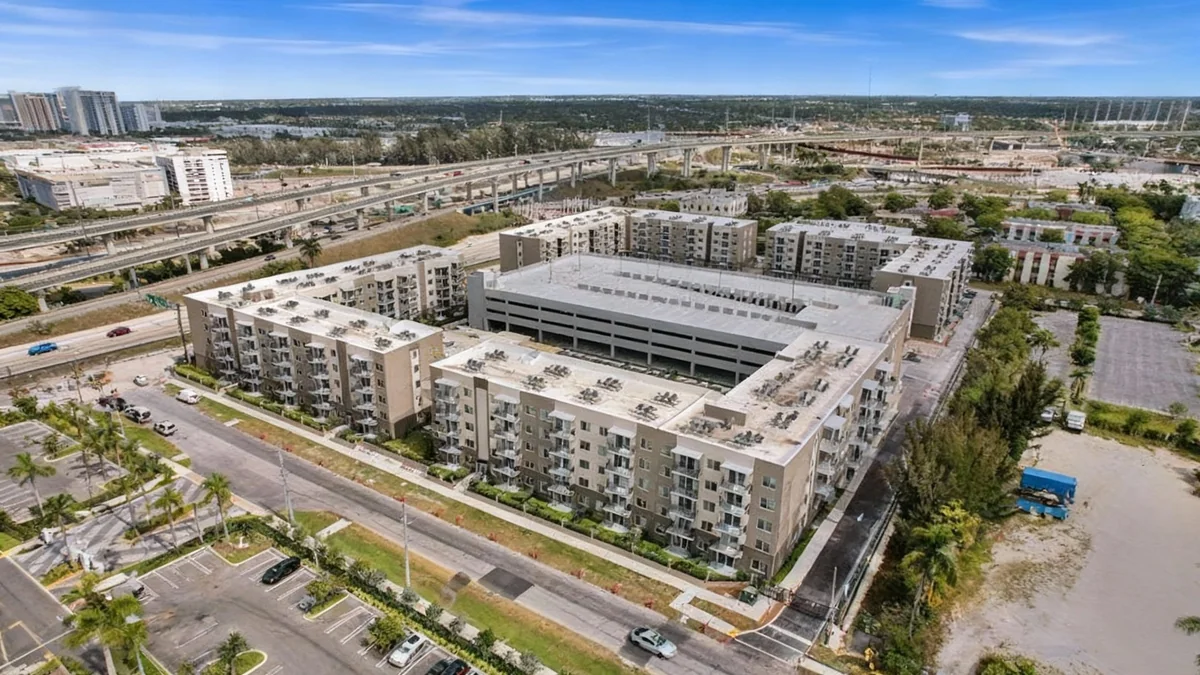Greater Boston's industrial real estate market demonstrated stability in the third quarter of 2025. This resilience was largely due to consistent leasing activity, with renewals forming a significant portion of agreements. This occurred despite ongoing economic uncertainties and the impact of recent tariff adjustments, according to a recent CBRE market report.
Key Takeaways
- Total industrial leasing volume reached 3.02 million square feet in Q3 2025.
- Renewals accounted for nearly 60% of all leasing activity, indicating tenant preference for stability.
- Net absorption was negative at -507,414 square feet for the quarter, influenced by renewals and expiring COVID-era leases.
- Overall availability rose slightly to 9.8%, while vacancy saw a minor decrease to 7.6%.
- Average asking rents remained stable at $15.20 per square foot NNN.
Industrial Leasing Activity Driven by Renewals
The third quarter of 2025 saw a total industrial leasing volume of approximately 3.02 million square feet across Greater Boston. A notable trend within this activity was the dominance of lease renewals. These renewals made up nearly 60% of the total leasing volume, a key factor in the market's stability.
This preference for renewals suggests that tenants are prioritizing cost control and operational consistency. Rather than relocating, many businesses chose to extend their current leases. This strategy helps companies avoid the expenses and disruptions associated with moving to new facilities.
"Tenants are increasingly hitting the ‘easy button’—choosing to renew in place to avoid relocation costs," the CBRE report states.
Market Snapshot
- Q3 2025 Leasing Volume: 3.02 million square feet
- Percentage of Renewals: Nearly 60%
- Average Asking Rent: $15.20 per square foot NNN
- Overall Availability: 9.8%
- Overall Vacancy: 7.6%
Net Absorption and Vacancy Trends
Despite the high volume of leasing, the market experienced negative net absorption during the third quarter. Net absorption measures the change in occupied space. Renewals do not add to net absorption because they do not involve new space being occupied.
The net absorption for Q3 2025 was -507,414 square feet. Year-to-date net absorption also remained negative, standing at -280,779 square feet. This indicates that more industrial space became available than was newly occupied over these periods.
Several factors contributed to this negative absorption. Besides the high rate of renewals, some larger spaces returned to the market. These returns were often due to the expiration of leases signed during the COVID-19 pandemic. Such expirations added pressure on the market by increasing the supply of available space.
Understanding Net Absorption
Net absorption is a key real estate metric. It measures the total amount of space that became physically occupied less the total amount of space that became physically vacant over a specific period. Positive net absorption means more space was leased than vacated, indicating market growth. Negative net absorption suggests the opposite.
Overall availability in the market increased by 20 basis points from the previous quarter, reaching 9.8%. This rise reflects the increase in available industrial properties. However, the overall vacancy rate saw a slight decrease of 10 basis points, settling at 7.6%.
The minor decline in vacancy can be attributed to limited new construction. A reduced pipeline of new industrial development meant fewer new spaces were competing for tenants. Additionally, several large vacant properties were successfully leased during the quarter, helping to absorb some of the available supply.
Rent Stability and Future Construction
Average asking rents for industrial properties in Greater Boston remained largely stable. The average asking rent was $15.20 per square foot NNN. This figure represents a minor decrease of only $0.06 from the previous quarter, demonstrating minimal fluctuation.
Analysts anticipate that rents will maintain this relative stability into 2026. This expectation is based on the current market dynamics, particularly the slowdown in speculative development. Speculative development refers to construction projects initiated without pre-leased tenants. A narrower construction pipeline means less new supply will enter the market in the near future.
Outlook for Lease Rates
Despite the current stability, CBRE projects potential upward pressure on lease rates over the next 12 to 18 months. This forecast is driven by two main factors:
- Increased Demand: A projected rise in demand, especially from third-party logistics (3PL) providers, could push rents higher. These companies require significant industrial space for storage and distribution.
- Mark-to-Market Renewals: As existing leases expire, landlords may adjust renewal rates to align with current market values, a process known as mark-to-market renewals. This could lead to higher rents for renewing tenants.
According to the report, market fundamentals have softened slightly. However, CBRE expects the Boston industrial market to remain stable through the end of 2025. This stability is contingent on the materialization of demand from larger users in upcoming quarters.
Broader Economic Influences
Market analysts caution that external factors will continue to shape the industrial real estate sector. These broader influences include:
- Interest Rate Shifts: Changes in interest rates can impact borrowing costs for developers and investors, affecting new construction and acquisition activity.
- Global Trade Dynamics: Fluctuations in international trade agreements and tariffs can influence demand for warehouse and distribution space. Recent tariff adjustments have already had an effect.
- Emerging Technologies: Advances in technologies such as artificial intelligence (AI) and robotics could alter logistics and supply chain needs, potentially changing the demand for industrial space.
In summary, Boston's industrial sector is navigating through economic challenges with a degree of optimism. Occupiers are prioritizing flexibility, while landlords are adapting to changing tenant preferences and macroeconomic conditions. The market's resilience, driven by renewals, highlights a cautious but steady approach.
This careful management of existing properties and a limited new supply pipeline are key to maintaining equilibrium in the face of wider economic shifts. The long-term outlook will depend on how these external factors evolve and how the market adapts to new demands.





